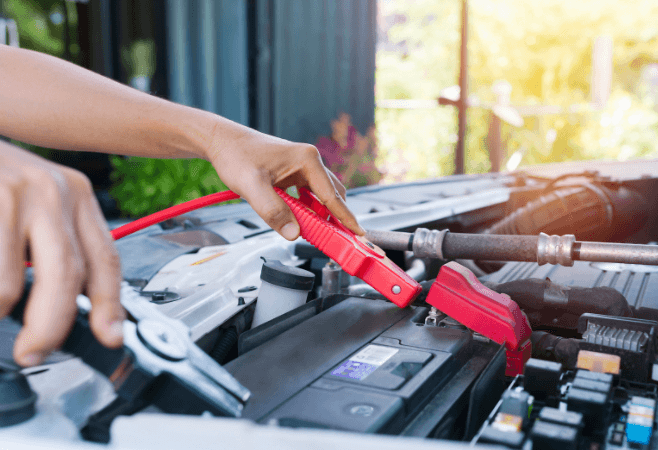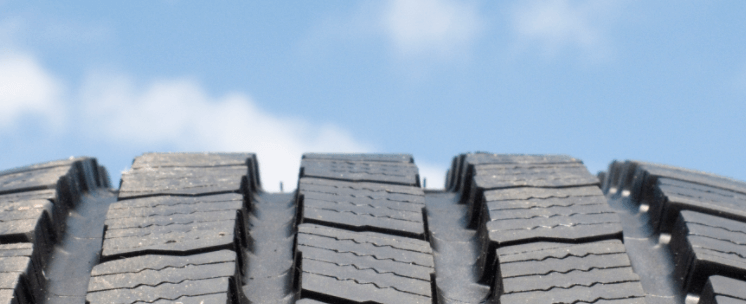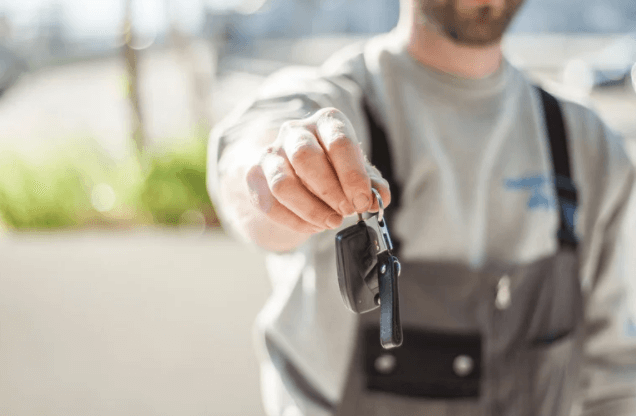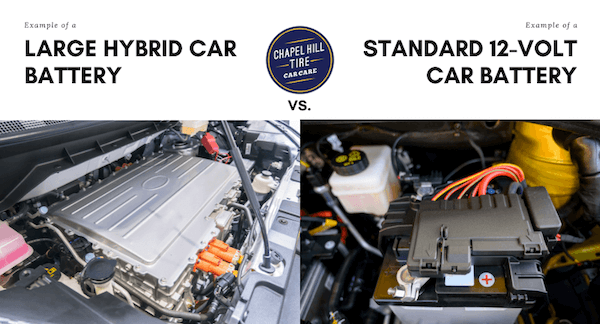Your car battery is essential in getting you where you need to go. Specifically, your battery often needs 12 volts of power to start your vehicle. Our local mechanics are here with a closer look at car battery voltage.
12-Volt DC Battery: The Car Standard
“How many volts are in a car battery?” Most vehicles on the road are powered by a 12-volt DC battery. Even hybrid and electric cars have 12-volt batteries working alongside their high-power battery packs.
While your alternator takes over the electrical functions of your car while you are driving, this battery plays several vital roles in the driving process:
- Starting: Before your alternator can kick in, your 12V car battery is responsible for starting your car and powering all functions.
- Unlocking: When you click the fob to unlock your car automatically, it uses power from your battery to signal and turn the locks. (Hint: If your car battery dies and your vehicle will not unlock, most fobs have a hidden key for manual unlocking).
- Keeping the Lights On: After you turn off your engine, your battery will keep the lights on and allow other functions to continue—like the radio and device charging.
A Closer Look: How Many Volts in a Car Battery
While they are called “12-volt batteries,” this is simply the nominal voltage rating. In other words, 12 volts is the energy output car batteries should provide in normal circumstances.
The actual voltage supply can vary slightly depending on the battery’s composition, age, testing circumstances, and charge. Let’s take a look at some examples:
- If you test your car battery while it is actively running, a healthy unit will read between 13 volts and 15 volts.
- If your battery is fully charged after a long drive, the voltage output might read as ~12.4 volts – 12.9 volts.
- Meanwhile, an older battery low on charge after a cold winter night might read as 12 volts or lower.
Why does voltage matter? It is always better to replace your battery at the first signs of failure—rather than wait until you are stranded on the go. Keeping an eye on your battery output can help. This reading can also signal whether your battery is declining early. In these cases, you can take measures to further protect your battery and prolong its lifespan.
You can easily have your car battery tested and serviced by a professional mechanic. However, most vehicles require the full 12-volt output to start. If you don’t have the juice you need to make it to a local shop, here are some resources that can help:
- An 8-step guide to jump-starting your car battery
- How to jump a hybrid car battery
- 5 dead battery tips and tricks to keep you moving
- Is jumping a dead car battery safe?
Low Voltage Output: Causes and Solutions
What Causes Car Battery Failure?
On average, most car batteries last 4-7 years, depending on how well you care for them. Generally, if your car battery is supplying low voltage, it is experiencing routine failure. However, there are a few other potential causes of low voltage, including:
- A failing alternator: Your alternator recharges your battery as you drive. Without proper alternator functioning, your car battery will quickly die.
- Corrosion: Any corrosion on your car battery can interrupt its charging and power transfer.
- Electrical issue: Rather than low output, there could be an issue with the electrical connection in your engine.
- Starter Issue: If your car doesn’t have the power it needs to turn over, there could be an issue with any component in your starting system.
Solutions for Your Car Battery
While it might be too late for your current car battery, there are a few potential solutions that can help preserve your new 12-volt DC battery:
- Regular driving: Your alternator recharges your car battery as you drive. Avoiding long periods of dormancy can help keep your battery healthy and charged.
- Avoid extreme temperatures: The summer’s heat can destroy your car battery from the inside out—causing irreversible damage. Meanwhile, cold temperatures slow down the electrochemical process that generates your battery’s power.
- Keep away corrosion: You can have corroded battery terminal ends replaced by a professional mechanic to extend the lifespan of your battery.
- Avoid lingering electronics: When your engine is turned off, all of your car’s functions (like the lights, phone charging, and radio) will depend solely on your 12-volt battery—draining away its charge. Be sure to turn off all lights and unplug your devices after switching your engine off.
- Maintain routine vehicle maintenance: In some cases, regular engine maintenance can help keep your battery protected. For example, during the colder months, slow-moving engine oil can force your vehicle to work harder to start. Naturally, this requires an extra boost of energy from your battery. Fresh engine oil helps alleviate this stress on your battery and engine.
Car Battery Replacement Near Me at Chapel Hill Tire
If you need your car battery serviced, tested, or replaced, the local mechanics at Chapel Hill Tire have you covered! We proudly serve the greater Triangle area with 10 locations across Cary, Apex, Raleigh, Chapel Hill, Carrboro, and Durham. Our professional mechanics also commonly serve surrounding communities, including Knightdale, Pittsboro, Wake Forest, Hillsborough, Morrisville, and beyond. We invite you to make an appointment or give us a call to get started today!











